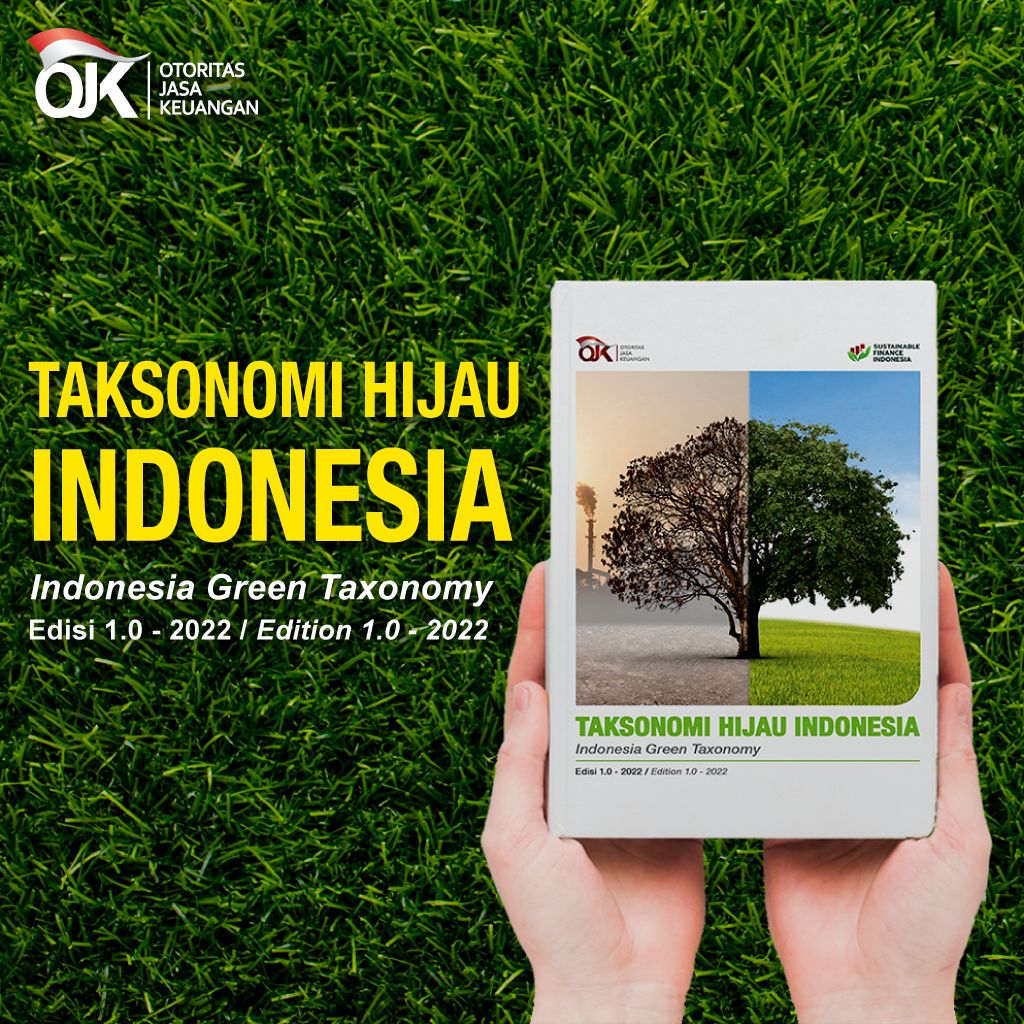Indonesia Green Taxonomy Edition 1.0 - 2022
: Other
: Green Taxonomy
:
Sustainability has become one of the main considerations in any financial sectors’ financing/investment. However, a convergence of understanding on terminologies is needed for the market players and a wider range of stakeholders. One of the objectives of sustainable finance policies is to ensure that all FSS and stakeholders are using a common vocabulary regarding sustainable finance. This also serves as a contribution to other ongoing efforts within the FSS in developing key terms and definitions in sustainable finance.
The proper utilization of natural resources and good environmental conditions are Indonesia’s main economic capital assets. Similar to asset management, natural resources and environmental conditions need to be managed properly in order to continuously support the economy in a sustainable manner. Financial sectors can play as a catalyst in accelerating the implementation of economic activities that provide positive impacts to the environment in building a more resilient economy, therefore a common understanding regarding the business activities is needed through the Green Taxonomy. Green Taxonomy is important because it can provide a better understanding for FSS and facilitate them in the classification of green activities within the development of their financial product and/or services portofolio. Therefore, Green Taxonomy is expected to help the periodic monitoring process in the implementation of credit/financing/investment into the green sector and prevent the potential reporting of green activities (greenwashing).
At the global level, both financial authorities and international entities have developed Green Taxonomy or related guidelines regarding the definition of green activities. Green Taxonomy is a classification of economic activities which supports environmental protection and management efforts, as well as mitigation and adaptation to climate change. The strategic objective of Green Taxonomy is to encourage innovation in developing green products/projects/initiatives, in accordance with the government’s thresholds.
The Green Taxonomy is structured based on Indonesia Standard Industrial Classification (KBLI) and does not focus only on sub-sector/group/business activities that are categorized as green, but also includes sectors/groups/business activities that are yet to be classified into green category. Green Taxonomy also opens up some room for sectors/groups/ business activities that are yet to be listed in KBLI according to clarifications from the relevant ministries.
There are 2,733 sectors and sub-sectors that have been studied, and 919 can be mapped to sub-sectors/groups/business activities (KBLI Level 5) and clarified on its threshold by technical ministries. Among the 919 subsectors/groups/business activities, 904 are not yet able to be directly categorized as green sector (as there are prerequisites that must be met first) while the other 15 can be included directly in green category. For classification purposes, the criteria are divided into three categories, namely: green (do no significant harm, apply minimum safeguard, provide positive Impact to the environment and align with the environmental objective of the taxonomy, yellow (do no significant harm), and red (harmful activities). This document also notes 198 additional subsectors for further development areas that were proposed by several ministries and other stakeholders.
Forward, Green Taxonomy is also envisioned to enhance the quality of disclosure in FSS' Sustainability Reports and to improve environmental quality through more sustainable economic and investment activities.
For more information, download here


